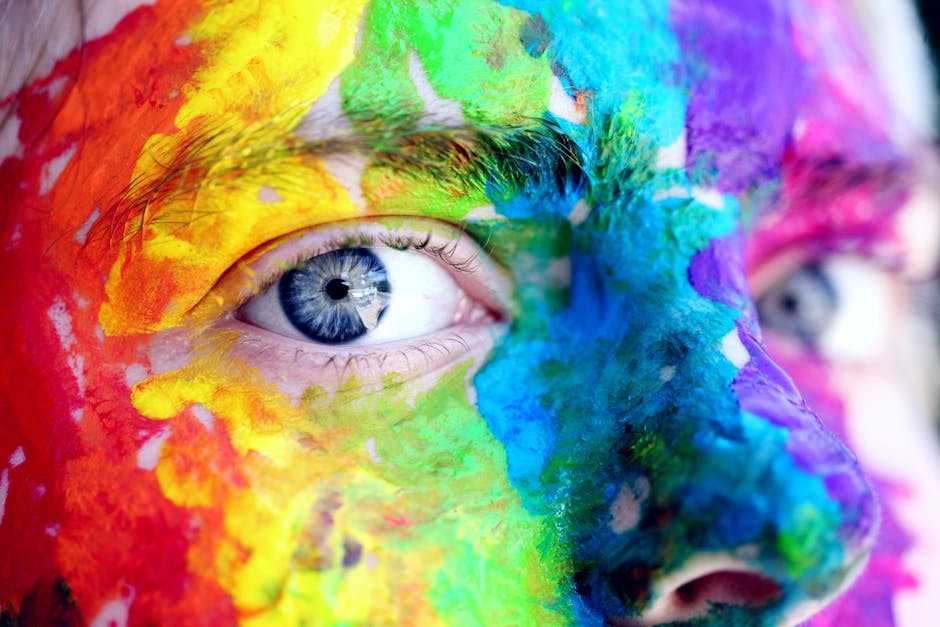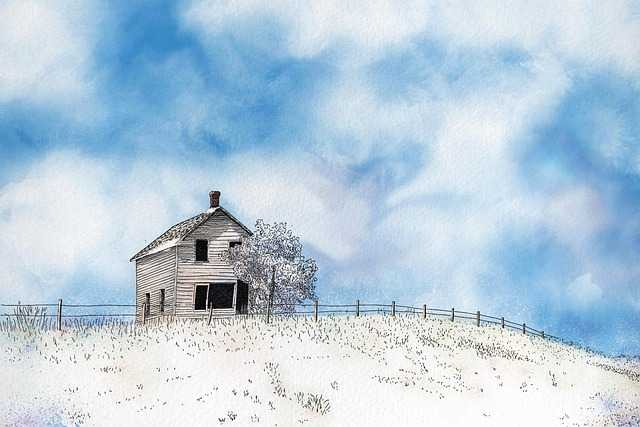Table of Contents
- Exploring the Evolution of Landscape Paintings Through the Ages
- Techniques That Bring Nature to Life on Canvas
- Choosing the Right Colors to Evoke Emotion in Landscape Art
- Tips for Incorporating Landscape Paintings into Your Home Décor
- Q&A
- To Wrap It Up
Exploring the Evolution of Landscape Paintings Through the Ages
The rich tapestry of landscape paintings has a history as varied as the subjects it captures. From the mystical vistas of the Romantic period to the clean lines of modernism, artists have continuously evolved their approaches to portraying the natural world. Each era brought with it new techniques, influences, and philosophies that reflected not only artistic trends but societal shifts as well. Notably, nature has often been a means of expression for emotions, spirituality, and the human condition itself.
One of the key milestones in the evolution of landscape painting was during the Renaissance. Artists like Leonardo da Vinci and Raphael began to introduce depth and perspective, creating a sense of realism that had not been seen before. They utilized techniques like chiaroscuro to convey light and shadow, enhancing the three-dimensionality of their landscapes. This period emphasized the relationship between humanity and nature, paving the way for future explorations.
Fast forward to the 19th century, where Impressionism transformed the genre dramatically. Artists such as Claude Monet and Vincent van Gogh championed brush strokes and colors that painstakingly captured fleeting moments and changing light. This new approach not only changed technical aspects but also altered the viewer’s perception, inviting them to feel the ambiance of a scene rather than merely observe it. The focus was less on precision and more on an emotional response to the landscape.
In contemporary art, landscape painting continues to innovate and expand. Artists often challenge traditional notions, incorporating abstract elements and mixed media to convey messages about environmental issues or personal narratives. This shift reflects a broader cultural consciousness about nature’s role in modern society. To illustrate the diversity of approaches, here’s a brief comparison of key periods in landscape painting:
| Period | Key Characteristics | Notable Artists |
|---|---|---|
| Renaissance | Realistic perspective, harmonious composition | Leonardo da Vinci, Raphael |
| Romanticism | Emphasis on emotion, dramatic landscapes | Caspar David Friedrich, J.M.W. Turner |
| Impressionism | Light effects, loose brushwork | Claude Monet, Vincent van Gogh |
| Contemporary | Abstract interpretations, environmental themes | Daniel Richter, Julie Mehretu |


Techniques That Bring Nature to Life on Canvas
Bringing nature to life on canvas requires more than just a skilled hand; it demands a deep understanding of the environment and a unique approach to translating its beauty. One effective technique is the use of color harmony. By carefully selecting a palette that reflects the scene’s mood—be it the soft pastels of dawn or the vibrant hues of a summer afternoon—artists can evoke feelings and set the tone for their landscapes. Combinations such as complementary colors can create striking contrasts, while analogous colors provide seamless transitions that mimic natural gradients.
Another pivotal technique lies in texture creation, which adds depth and interest to landscape paintings. Artists often employ a variety of brush strokes and tools to simulate natural elements. For instance, stiff bristles might be used to depict rough tree bark, while soft, sweeping strokes can suggest the gentle movement of grass in the wind. Techniques like layering paint or using palette knives can enhance the tactile quality of the work, making it feel almost three-dimensional.
Atmospheric perspective is essential in landscape painting as it helps to create a sense of depth and distance. This technique involves manipulating color and clarity to convey the effects of the atmosphere on objects at varying distances. For example, objects in the foreground are painted with sharp detail and richer colors, while those further away become lighter, softer, and tinted with blues or greys. This illusion draws viewers into the painting, inviting them to explore and experience the scenery as if they were actually there.
incorporating natural light is crucial for capturing the essence of a landscape. The way light interacts with elements in the scene can dramatically alter its appearance. Artists can depict various times of day and weather conditions through strategic highlights and shadows, employing glazing techniques and underpainting to layer colors effectively. This attention to lighting not only enhances realism but also infuses emotional nuance into the artwork, leading to a deeper connection between the piece and the viewer.


Choosing the Right Colors to Evoke Emotion in Landscape Art
When creating landscape paintings, the choice of color palette can significantly influence the emotional response of the viewer. Each color carries intrinsic meanings and psychological effects that can transport your audience to a specific mood or atmosphere. For instance, warm colors such as reds, oranges, and yellows often evoke feelings of warmth, passion, and happiness, mimicking the essence of a vibrant sunset. On the other hand, cool colors like blues, greens, and purples typically create a sense of calm, serenity, and introspection, reminiscent of a tranquil forest or a soothing ocean.
Consider how color saturation and contrast can enhance the emotional depth of your painting. A landscape painted in muted tones might suggest a nostalgic or somber experience, perfect for capturing the subtle beauty of a misty morning. In contrast, a vibrant, high-saturation piece could convey excitement and vitality, drawing the viewer into a lively autumn scene filled with bright foliage. Additionally, balancing colors through contrasting hues can add dynamism to a composition, making specific elements pop and guiding the viewer’s eye towards focal points. Here are a few emotional associations for common colors:
- Red: Energy, passion, warmth
- Blue: Calmness, tranquility, sadness
- Yellow: Joy, optimism, brightness
- Green: Nature, growth, freshness
- Purple: Luxury, mystery, spirituality
Another important aspect to consider is the context in which colors are used. The same shade can evoke different feelings depending on its surroundings. For example, a deep green can feel tranquil when paired with soft blues, but when juxtaposed with vibrant reds, it might evoke unease or tension. Artists can leverage these interactions to create a narrative within their landscapes. By thoughtfully considering color relationships and their emotional undercurrents, artists can craft landscapes that resonate deeply with their audience, encouraging a visceral connection to the scene depicted.


Tips for Incorporating Landscape Paintings into Your Home Décor
Incorporating landscape paintings into your home décor can transform your space, infusing it with color, light, and emotional depth. To maximize their impact, consider the size and scale of each piece in relation to the room. A large canvas can become a stunning focal point above a sofa or fireplace, while smaller pieces can create an intimate gallery wall. When selecting your landscapes, think about the mood you want to evoke—serene mountain views can bring a sense of calm, while vibrant coastal scenes might inject energy into your environment.
Next, pay attention to the color scheme of your room. Choose landscape paintings that complement or contrast with your existing décor. For example, if your living space features muted earth tones, a painting with rich autumn colors or bright spring blossoms can provide a refreshing splash of vibrancy. You might also consider using a painting to highlight a specific feature of the room, such as a color that appears in the upholstery or curtains. This technique creates harmony and allows the painting to integrate seamlessly into your overall design.
Additionally, think about the arrangement of your artwork. Instead of hanging all your landscape paintings in a row, try creating a more dynamic display. Use varied frame styles and sizes to add interest, or mix in other forms of art, like abstract pieces or photographs, to create depth. Here are some tips to consider when arranging your paintings:
- Group paintings with similar themes or colors.
- Use non-linear arrangements to keep the eye moving around the room.
- Vary the height at which paintings are hung; eye level is usually best for key pieces.
- Consider the flow of light; hang lighter pieces in well-lit areas and darker ones in corners.
Lastly, don’t forget the framing and mounting options available for your landscape paintings. The right frame can drastically change the overall look and feel of a piece. Choose frames that resonate with your room’s style; sleek, modern frames work well for contemporary settings, while ornate wooden frames might suit a more traditional décor. If you’re working with multiple pieces, consider a cohesive approach with frames sharing similar finishes or styles. As a creative idea, try floating frames for a modern touch, which can create the illusion that the art is “floating” on the wall.
